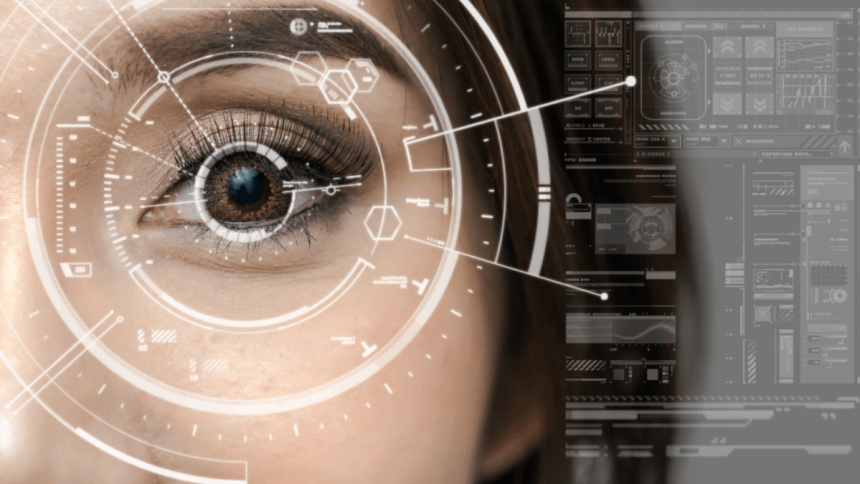In a crowded coffee shop, two strangers lock eyes across the room. For a fleeting moment, time seems suspended—a wordless conversation unfolds in milliseconds. This ancient dance of human connection, encoded in the simple act of looking and being seen, has captivated philosophers, scientists, and storytellers for millennia. Yet in our increasingly digital world, where screens mediate more of our interactions than ever before, the profound power of eye contact is both more precious and more elusive than we might realize.
The human eye, often called the window to the soul, serves as far more than a mere sensory organ. It functions as a sophisticated communication device, transmitting complex emotional and social information with remarkable precision. Recent neuroscience research reveals that our brains process eye contact differently from any other visual stimulus, activating neural networks associated with social cognition, empathy, and even survival instincts.
The Science Behind the Stare
When we make eye contact with another person, our brains undergo a fascinating cascade of neurological events. The superior temporal sulcus, a region crucial for social perception, lights up with activity. Simultaneously, the amygdala—our brain’s alarm system—evaluates the social threat or opportunity presented by this direct gaze. This split-second analysis determines whether we feel comfortable, threatened, attracted, or compelled to look away.
Dr. Rebecca Saxe, a cognitive scientist at MIT, has spent years studying how the brain processes social information through eye contact. Her research demonstrates that even brief moments of mutual gaze can synchronize brain activity between two people, creating what she terms “neural coupling.” This biological phenomenon suggests that eye contact literally helps us connect with others on a neurological level, fostering empathy and understanding in ways that extend far beyond conscious awareness.
The timing and duration of eye contact carry their own intricate meanings. Cultural anthropologists have documented how different societies establish distinct norms around appropriate gaze patterns. In Western cultures, maintaining eye contact for approximately 60-70% of a conversation signals engagement and honesty. Too little, and we appear disinterested or deceptive; too much, and we risk seeming aggressive or invasive.
Digital Disruption and the Lost Art of Looking
The rise of digital communication has fundamentally altered how we experience and interpret eye contact. Video calls, despite their technological sophistication, fail to replicate the neurological impact of in-person gaze. The camera’s position relative to our eyes creates a parallax effect—when we look at someone’s eyes on screen, we’re not actually making eye contact from their perspective. This subtle but significant disconnect may explain why video meetings often feel more draining and less satisfying than face-to-face encounters.
Social media platforms have created entirely new categories of visual interaction. The phenomenon of “eye contact” with celebrities or influencers through photographs creates a one-way intimacy that our brains struggle to categorize. We experience the neural activation associated with being seen and acknowledged, even though no genuine mutual recognition occurs. This pseudo-connection can leave us feeling simultaneously connected and isolated—part of a vast digital community yet somehow more alone than ever.
Young people, who have grown up immersed in digital communication, show measurably different patterns of eye contact behavior compared to previous generations. Studies indicate that teenagers today make less direct eye contact during conversations and report feeling more anxious when required to maintain prolonged gaze with adults. This shift raises important questions about how digital nativity might be reshaping fundamental aspects of human social development.
The Power Dynamics of Perception
Eye contact serves as a powerful tool for establishing and negotiating social hierarchies. In professional settings, the ability to maintain appropriate eye contact often correlates with perceptions of leadership, competence, and trustworthiness. Job interviews, business negotiations, and public speaking all rely heavily on strategic use of gaze to convey confidence and establish rapport.
However, these same dynamics can perpetuate systemic inequalities. Research shows that people in positions of power tend to maintain eye contact while speaking but look away while listening—a pattern that reinforces dominance hierarchies. Conversely, those in subordinate positions often exhibit the opposite behavior, maintaining attentive gaze while listening but avoiding direct eye contact when asserting their own ideas.
Gender differences in eye contact patterns reflect broader social conditioning around power and submission. Women are generally socialized to maintain more eye contact than men, particularly in listening roles, while men are encouraged to use direct gaze as a tool of assertion and control. These learned behaviors can create complex dynamics in mixed-gender interactions, where cultural expectations around appropriate eye contact may conflict with individual communication styles.
Cultural Variations and Universal Truths
While the basic neurological response to eye contact appears universal across human cultures, the social meanings and appropriate contexts for direct gaze vary dramatically around the world. In many East Asian cultures, prolonged eye contact with authority figures is considered disrespectful, while in Mediterranean cultures, avoiding eye contact might be interpreted as dishonesty or disengagement.
Indigenous communities often have sophisticated protocols around eye contact that reflect deep spiritual beliefs about the power of seeing and being seen. Some Native American traditions teach that direct eye contact can transfer energy between individuals, making it inappropriate in certain ceremonial or healing contexts. These cultural frameworks remind us that our Western emphasis on eye contact as a universal sign of honesty and engagement represents just one way of understanding this complex social behavior.
Despite these cultural variations, certain aspects of eye contact appear to transcend cultural boundaries. The mutual gaze between parent and infant, for example, serves crucial developmental functions across all human societies. This early eye contact helps establish attachment bonds, facilitates language learning, and provides infants with their first lessons in reading emotional cues—skills that remain fundamental throughout life.
The Therapeutic Power of Being Seen
Mental health professionals have long recognized the healing potential of sustained, compassionate eye contact. Therapeutic relationships often begin with the simple but profound act of one person truly seeing another without judgment. This experience of being witnessed and accepted can be transformative for individuals struggling with shame, isolation, or trauma.
Eye Movement Desensitization and Reprocessing (EMDR), a widely-used trauma therapy, explicitly incorporates eye movements and visual attention as core components of the healing process. While the specific mechanisms remain debated, many practitioners and patients report that the visual elements of EMDR help process traumatic memories in ways that purely verbal therapies cannot achieve.
The growing field of social prescribing recognizes that meaningful human connection—including the simple act of making eye contact with others—can have measurable impacts on both mental and physical health. Community programs that bring isolated individuals together for shared activities often emphasize the importance of face-to-face interaction as a cornerstone of wellbeing.
For those experiencing vision changes or eye health concerns, maintaining these crucial social connections becomes even more important. Regular eye care helps ensure that we can continue participating fully in the visual aspects of human communication, and many people find it beneficial to schedule an eye exam at CustomEyes to address any concerns that might be affecting their ability to connect with others.
Reclaiming Connection in a Distracted World
As we navigate an increasingly screen-mediated existence, the intentional cultivation of eye contact becomes both more challenging and more essential. Simple practices can help us reconnect with this fundamental aspect of human communication. Putting away devices during conversations, making conscious efforts to look up from screens when others are speaking, and practicing comfortable eye contact in low-stakes social situations can all help rebuild these crucial skills.
The art of truly seeing another person—and allowing ourselves to be seen in return—represents one of humanity’s most profound capabilities. In a world that often feels fragmented and disconnected, the simple act of meeting someone’s gaze with openness and presence offers a pathway back to genuine human connection. As we move forward into an uncertain digital future, preserving and nurturing this ancient form of communication may be more important than we realize.
Our eyes, in their endless capacity to convey meaning, emotion, and recognition, remind us that some aspects of human connection cannot be digitized or automated. They require presence, vulnerability, and the willingness to truly see and be seen. In rediscovering the power of eye contact, we rediscover something essential about what it means to be human.
Lynn Martelli is an editor at Readability. She received her MFA in Creative Writing from Antioch University and has worked as an editor for over 10 years. Lynn has edited a wide variety of books, including fiction, non-fiction, memoirs, and more. In her free time, Lynn enjoys reading, writing, and spending time with her family and friends.















